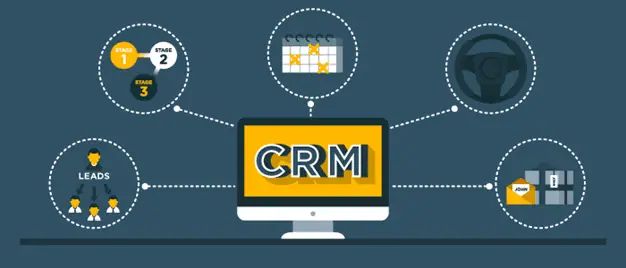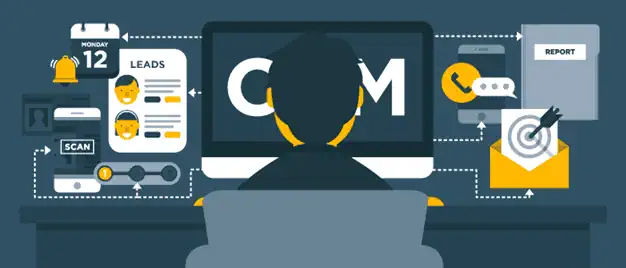Have you ever heard of the phrase ‘To do Business, you need the opportunities to do business’? The consensus is, if there aren’t customers to sell vehicles to, how do you expect your Dealership to sell any cars? In the Automotive Industry, we call these opportunities or prospects “UPs” (meaning Unsold Prospects.) For this article, we will focus on the single, largest entity each Dealership should already have when looking to maximize and grow overall store profits – the Internet Department.
The Power of Words
The first vital takeaway from this article is the power of calling these opportunities, just that, opportunities! Typically, a dealership would label these customers as “leads.” The problem with that? Words become things! If your team solely sees these opportunities simply as “leads,” most will not handle them properly. They will not maximize these opportunities because they are mere “leads.” Instead, we must instill into ourselves and our staff that these are BUYERS! They aren’t just “names and numbers”; behind each “lead” is a story and a real person needing a vehicle! With that strategy in mind, you will start seeing these opportunities for precisely what they are… buyers, not just “leads.” The difference? By visualizing these opportunities as Buyers, you will perceive these Buyers as more important. Buyers deserve your time, your attention, your effort, your dedication, and your respect. As an Industry, we sell the second-largest item the average American will ever purchase. In some cases, an Automobile will be the single most expensive item an American will ever purchase. You must recognize the importance of these “buyers” and treat them as such.
insert video here

According to Autoweb, formerly Autobytel, approximately 50% of their national dealer clients do not adequately follow up with Internet purchase requests within the proper 48-hour time frame. You read that right! Even in 2023, in a post-pandemic reality, 50% of Autoweb dealers respond to potential buyers AFTER 48 hours. How and why is this the case? One attribution to this is: the perception that these opportunities are “leads” and not vital buyers.
How many opportunities does your dealership really have?
It’s essential to understand that the average Vehicle Buying Cycle on a new vehicle, before the pandemic, was approximately 83-87 days – to round up, about 90 Days. Meaning, if a buyer submits an Internet Purchase Request (“lead”) on March 1st, the average buyer wouldn’t purchase a New Vehicle until around June 1st! Now, with selling in a post-pandemic world, because of the New Vehicle inventory shortage and car prices skyrocketing over MSRP, that gestation period is averaging 120 – 150 days.
Why does the shift in the Vehicle Buying Cycle matter? Three words, “Residual Flow Factor.” For example, if a dealership receives 500 Internet Purchase Requests (“buyers“) in one month and can sell 50 Cars within that month solely from the Internet Department, that is not an accurate 10% Closing Rate!
Let me elaborate: if the Dealership in the example above were to run a report in their CRM to identify how many buyers/opportunities they had within the last 90 days, you’d find that they have more than 500 opportunities each month because even with starting the month, the Dealership is still working the previous month’s opportunities, which trickle into each following month.
In short: it’s not fair to say a dealership starts a month with zero Internet Purchase Requests/opportunities; they’re also working on the previous month’s Carry Over opportunities!

Let’s do the math…
That said, the exampled Dealership more than likely had at least 900 Buyers in their CRM that are less than 90 days old. If they received an additional 500 fresh/new Opportunities… the Dealership, in reality, would have approximately 1,400 working opportunities in March, bringing our original 10% Closing Rate down to a measly 3%. Now by combining the Dealership’s actual total opportunity amount, using that initial 10% Closing Rate, a genuine 10% would be selling 140 Cars per month – that’s a distinguishable difference! The worst part of uncovering the real numbers? The bigger your Dealership/Dealer Group is, the larger your store’s Residual Flow Factor becomes since it compounds, like interest. It’s a fact that Dealerships are losing anywhere from hundreds of thousands of dollars to millions from not maximizing their total opportunities… buyers!
Now, diving deeper into the rabbit hole, earlier in the article, we discuss the Vehicle Buying Cycle (gestation period) being elongated due to the new vehicle inventory shortage and rising automobile costs. That said, our normal 90-Day Cycle now stretches to upwards of 150 Days! This additional two-month gap then affects the Dealership’s internal processes and technology, especially the CRM. Fact: 90% of CRMs are either improperly set up, underutilized, or just plain broken! To exemplify this, if the Dealership example above received 500 Internet Purchase Requests/Buyers in March, over 60% of those Buyers will not even purchase in that first month! That leaves about 200 genuine Internet Purchase Requests/Buyers for March – using a 10% Closing Rate, as mentioned before, equates to only 20 Vehicles sold for the entire month.
Given this information, it’s clear to understand how the pandemic’s prolonged Vehicle Buying Cycle affects the Dealership’s CRM, resulting in an improperly set up, underutilized, or just a plain broken CRM! If the CRM cannot correctly account for the new buying cycle/gestation period, the opportunities will not correctly convert.

Keep in mind that with a 90-day residual flow factor, beginning with 1,400 total opportunities/buyers, with closing at 10%, a total of 140 sales are potential in one month… with only 500 new and freshly produced Internet Purchase Requests. Let’s adjust the math for the accurate gestation period of 150 Days, which would yield a potential 2,000 Buyers! So, to sell 19 units instead of 200 units is beyond insane to me. The analogy I love to use here is that it is just like going to your refrigerator and grabbing a big bottle of juice and taking one or two sips and putting the bottle back. After an hour or two you go back to the fridge because you are thirsty and instead of taking that perfectly good bottle of juice that is FRESH, tastes delicious and costs money, you move it to the side and grab a brand new bottle of juice, crack that one open and take a couple of sips and put that one back. Then a couple of hours later you go back to the fridge and repeat the madness by yet again moving past the TWO bottles of perfectly good, tasty and expensive juice to open up a fresh bottle and repeat this madness. That is exactly what is happening day after day, week after week, month after month, year after year in our industry. Only it is getting worse with the elongated gestation period in the buying cycle.
My advice is simple:
- Understand that there is something very real called a “residual flow factor”, respect it and set up your S.O.P.s accordingly.
- Make sure your CRM is set up correctly with the proper gestation periods, frequency, content etc…
- Stop doing the same thing over and over again and expecting a different result or worse accepting the crappy results that you are getting.
- Stop calling Internet purchase requests “leads”. They are NOT leads, they are BUYERS.
- For the love of God, please follow up with your prospects immediately. NADA says their is a direct correlation from response time to closing ratio. Follow up immediately, not in 1 hour, 30 minutes or 5 minutes. Strive for an instantaneous response. Not just an auto responder but a real response.

If you have any questions about this article or if you would like to schedule a free strategy session please contact me at 267-319-6776.
Also, make sure you attend my session at Digital Dealer Tampa. I will be taking this article to the next level!